 |
Posted on April 1st, 2009 by Dan Wilson | Filed under Volcanoes
| No Comments »
Click here for a link to some great pictures of the recent eruption of Mount Redoubt, 100 miles southwest of Anchorage, from the Alaska Volcano Observatory.
Additional Resources:
The Health Hazards of Volcanic Ash
Guidelines on Preparedness Before, During and After an Ashfall
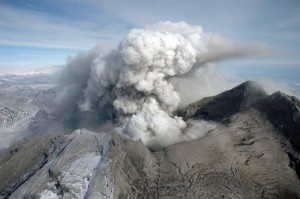 Mount Redoubt
Posted on March 25th, 2009 by Susan Yowell | Filed under CDC, Featured Web Site
| No Comments »
The Centers for Disease Control and Prevention (CDC) web site now displays a “Report an Emergency” button on each page within its “Emergency Preparedness and Response” section. Clicking there reveals a page that provides several options for obtaining health-related information in an emergency. Their recommendation to the general public is to call “911.” However, they offer a 24/7 direct telephone number to their Emergency Operations Center, for use by state and federal agencies, but also for physicians who may need information related to emergency patient care. As part of our emergency preparedness planning activities, we can add this resource to those we recommend to our clientele, especially since it is available 365/24/7.
Posted on March 11th, 2009 by Susan Yowell | Filed under Disaster Planning, Preparedness, Toolkit Tips, Writing a Disaster Plan
| No Comments »
Claire Hamasu, Associate Director of the MidContinental Region of NN/LM at Eccles Health Sciences Library, University of Utah in Salt Lake City, has sent us the recently implemented documentation developed by their library’s emergency preparedness team. It looks great, and we expect it will be really helpful to NN/LM members as an example of emergency/disaster planning for any type of library. They have provided their version of the Pocket Response Plan (PReP) (originally devised by the Council of State Archivists–see the “Disaster Plan Templates” page above) as well as a photo and the content of a flip-chart they designed for display in the library. The flip-chart provides quick and easy access to the key parts of their plan, while the PReP provides their staff with an easy-to-carry concise version of their plan for use from off-site.
We appreciate the willingness of the emergency preparedness team at Eccles HSL to share their work with us, and congratulate them on a job well done! See the “Disaster Plan Templates” page above to check out their documents. Many thanks to Claire for reporting her library’s progress and sending us these great ideas!
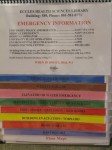 Eccles Library Flip Chart
Posted on March 5th, 2009 by Dan Wilson | Filed under Disaster Incidents
| No Comments »
Cologne’s six-story archives building collapsed at 2pm on Tuesday, March 3rd, burying in rubble manuscripts by Karl Marx and Friedrich Engels. Here is an account of the incident from The TimesOnline:
“There was even less warning of the collapse of the building than would have been given during a nuclear attack. Workers on the rooftop heard a cracking noise and immediately alerted the 26 people using the archives at the time. Less than three minutes later later, the building was flat.”
News reports/articles:
The city without a memory; treasures lost under the collapsed Cologne archives
Germany: Two still missing after building collapse
Acclaimed German writer’s archive lost in building collapse
Click here for pictures of the collapsed building.
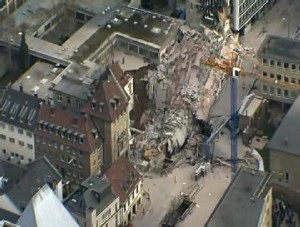 Photo: Reuters
Posted on March 3rd, 2009 by Susan Yowell | Filed under Alerting Systems, CDC, Disaster Incidents & Hazardous Weather Outlook, Drills, Featured Web Site, Hazardous Weather, Severe Storm, Shelter in Place, Suggested Readings, Tornadoes, and Hazardous Weather Outlook
| No Comments »
As winter bids us farewell with a few inches of snow and sub-freezing temperatures (increasingly rare here in central Virginia), we note that the likelihood of tornadoes will be increasing as the weather turns warmer. As they say, there is no real tornado “season,” because one can happen any time and in any place, but we see that internet searchers are looking for information on tornado preparedness more often now, so here is some information that we hope will be helpful in preparing for the tumultuous spring weather than can give birth to tornadoes and other severe storms.
As always, the Centers for Disease Control & Prevention web site offers excellent information and advice on tornadoes as part of their Emergency Preparedness and Response information, specifically their Natural Disasters and Severe Weather page. Click on the “Tornado” link for some great information on what you should know and what to do before a tornado, during and afterwards. For instance, what do you think is the most dangerous aspect of a tornado? Where is the most dangerous place to be in a tornado? The answers may surprise you!
Many states will be running tornado preparedness drills in March. Here’s the Virginia site that lists information about the state-wide drill on March 17, as well as how to run a tornado drill. Check out the information on the page about how to find the safest place inside your building to shelter from a tornado.
NOAA weather radios are wonderful to have in your building if you are in an area that is particularly vulnerable to servere storms, or you just want to keep in touch with weather events. They are available with a range of features and at a price range from $25 and up, from a variety of sources. (Amazon lists many models and prices.) Ours has alerted us several times to thunderstorms in the summer, which helped us to be prepared for possible power disruptions and wind/water damage. The NOAA radios receive information continuously from the National Weather Service, and you can set them to sound an alert to your specific area so that the alarm doesn’t sound more often than necessary. Best wishes to everyone for a safe and happy spring season!

Posted on February 24th, 2009 by Susan Yowell | Filed under Featured Web Site, Recovery, Toolkit Tips, Water Leaks
| No Comments »
While many/most libraries are decreasing the number of print materials they maintain, news reports indicate that the current economic woes are leading many users back to libraries to borrow books rather than buying books online. Another effect of the financial crises affecting our institutions is that there is often no funding available to replace damaged or lost print materials.
Just recently when we met with NN/LM Pacific Northwest staff and their State Coordinators for emergency preparedness, we heard a story of a hospital librarian who had recently reported to her State Coordinator about water damage to a book truck of new books. This one book truck held her major print purchase for the year, and there would most likely not be money to replace the books that got wet. Considering all these indicators of the “long tail” of the need for print materials in libraries, I’ve been reviewing the resources we list to aid in preserving print in the event of water damage, fire, etc. The right side menu bar here lists many of them and there is a wealth of great information available.
Here is a document I found today from the American Institute for Conservation of Historic and Artistic Works (AIC) that deals specifically with caring for print books. The brochure is well written, and gives a good overview of information that has been de-emphasized in many libraries these days, but might well come in handy as librarians and volunteers with limited or no training for conservation or preservation try to keep their paper resources alive as long as possible.
Much of the AIC website is intended for professional conservators, but the “Caring for Your Treasures” series of publications contains lots of helpful information for the public, sort of the “Consumer Health” portion of their site. AIC’s Disaster Response & Recovery page is also worth a look for information on a wide range of types of materials and web sites of interest.
Posted on February 16th, 2009 by Susan Yowell | Filed under Disaster Planning, Procedures, Suggested Readings, Toolkit Tips, Writing a Disaster Plan
| No Comments »
Logan Ludwig, Director of the Loyola University Chicago’s Health Sciences Library, is also the State Coordinator for Emergency Preparedness for Illinois in the Greater Midwest Region of NN/LM. He has given us permission to post here on the toolkit the Disaster Preparedness and Recovery Manual that he and his colleagues have prepared for their library. The Loyola HSL plan is a great example of a concise one that also covers many bases in terms of both preparedness and response. Check on the “Disaster Plan Templates” page (above) and look in the “Resource Libraries” section for the link to the plan.
Many thanks to Logan for allowing us to view Loyola’s plan, and congratulations on a job well done!
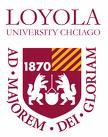
Posted on February 12th, 2009 by Susan Yowell | Filed under Meeting Reports, NN/LM National Emergency Preparedness Plan
| No Comments »
On Monday, Feb. 9, Dan and I had the pleasure of meeting with the NN/LM Pacific Northwest Region’s (PNR) staff, as well as the State Emergency Preparedness (EP) Coordinators for the region, and several members of the University of Washington’s Health Sciences Library staff. The meeting at the South Campus Center began with a review by Dan about the progress made with regard to the roll-out and implementation of the NN/LM Emergency Preparedness & Response plan since last spring, when we visited PNR on March 17. The PNR State EP Coordinators contributed information about the status of emergency planning in their states, some of the risks they face (tsunamis, volcanoes, earthquakes), some challenges in their areas (remote areas in Alaska, sparsely populated areas in Montana) as well as several incidents that have occurred in the past year. Following the updates, Dan facilitated a discussion of current initiatives and issues including MOUs and MAAs, service continuity training, NLM’s Emergency Access Initiative, use of the online toolkit, DOCLINE issues, and others. The afternoon session included a “train-the-trainer” session, in which Dan presented the Instructional Guide for training NN/LM Network members in service continuity, as outlined in the “10 Step Approach to Service Continuity” class. After the class, the State EP Coordinators and Gail Kouame, Consumer Health Coordinator and Chair of the EP Committee, met to plan initiatives for the coming year.
Following the meeting, a group of us went to dinner and were able to follow-up about the day’s activities. Gail reported that the EP Committee is energized, and had come up with lots of good ideas for promoting the Plan in their states. We look forward to hearing about their activities and the ways they will engage their Network members in emergency preparedness!
 PNR State Coordinators: Bob Pringle, Washington; Kathy Murray, Alaska; Marcia Francis, Idaho; Dolores Judkins, Oregon; Laurel Egan, Montana 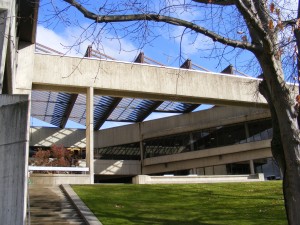 South Campus Center, University of Washington
Posted on February 11th, 2009 by Dan Wilson | Filed under CDC, Volcanoes
| No Comments »
Click here to view CDC information on volcano preparedness and response. Highlighted is a link to updates on Mount Redoubt from the Alaska Volcano Observatory.
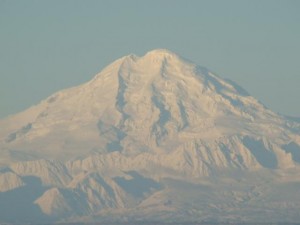 Mount Redoubt near Anchorage, Alaska (Photo from Alaska Volcano Observatory website.)
Posted on February 6th, 2009 by Susan Yowell | Filed under Business Continuity Planning, Meeting Reports, Service Continuity Planning
| No Comments »
Dan Wilson and I will be in Seattle on Monday, February 9, to meet with Cathy Burroughs, her NN/LM staff, regional representatives and others at the Pacific Northwest Regional (PNR) office of NN/LM at the University of Washington. In the morning, we will be reporting on recent developments of the NN/LM Emergency Preparedness & Response (EP&RP) initiative and facilitating discussion of regional issues. In the afternoon, we will facilitate a “train-the-trainer” session for NN/LM staff and regional representatives to enable them to teach the “10-Step Approach to Service Continuity ” to their Network members.
Other training sessions scheduled for this spring include the South Central Region in Houston in March and the Greater Midwest Region in Chicago in April. Stay tuned to hear when the NN/LM Emergency Preparedness & Response Plan will be playing at a site near you!
 “Dragonfly” image from PNR’s newsletter. “Dragonfly” image from PNR’s newsletter.
|
 |













 “Dragonfly” image from
“Dragonfly” image from 